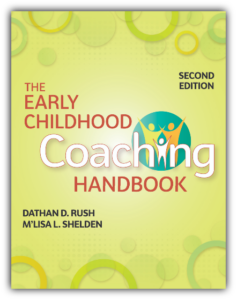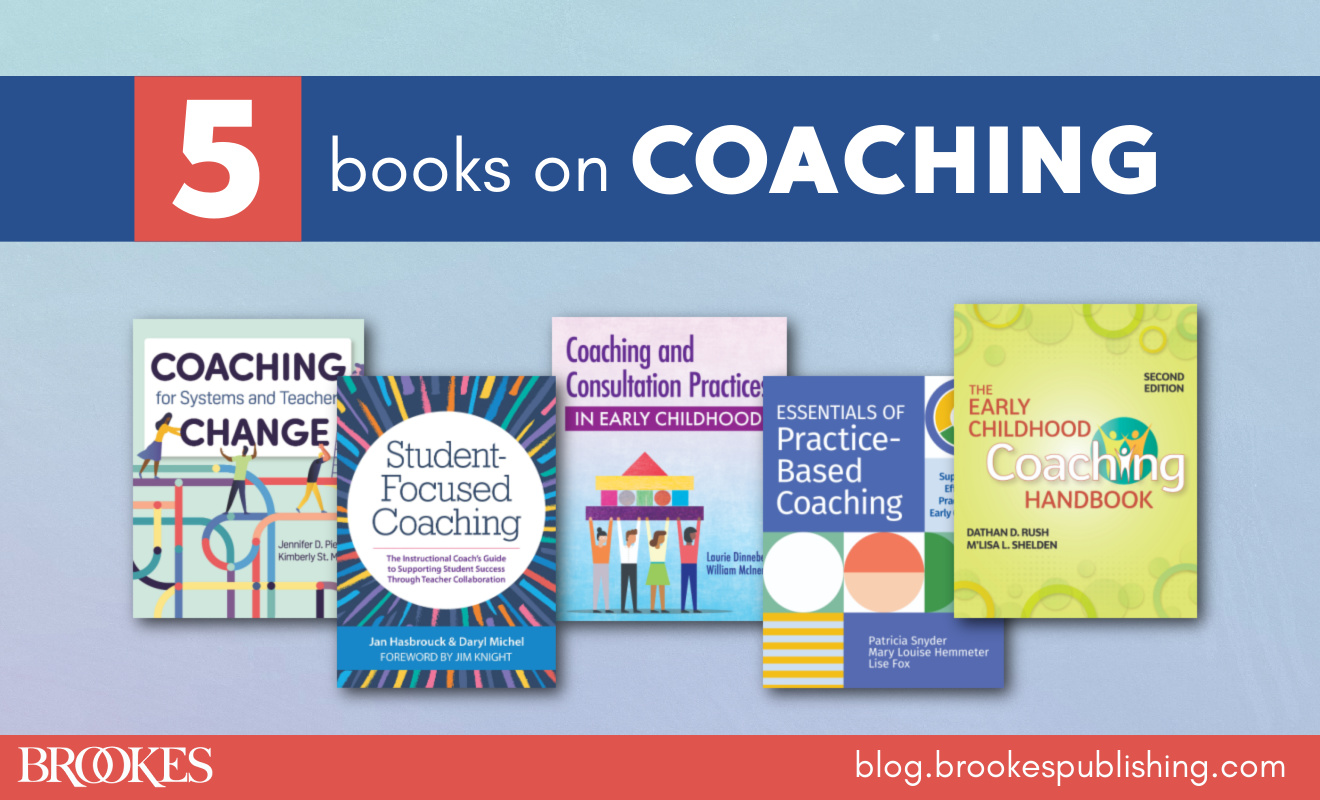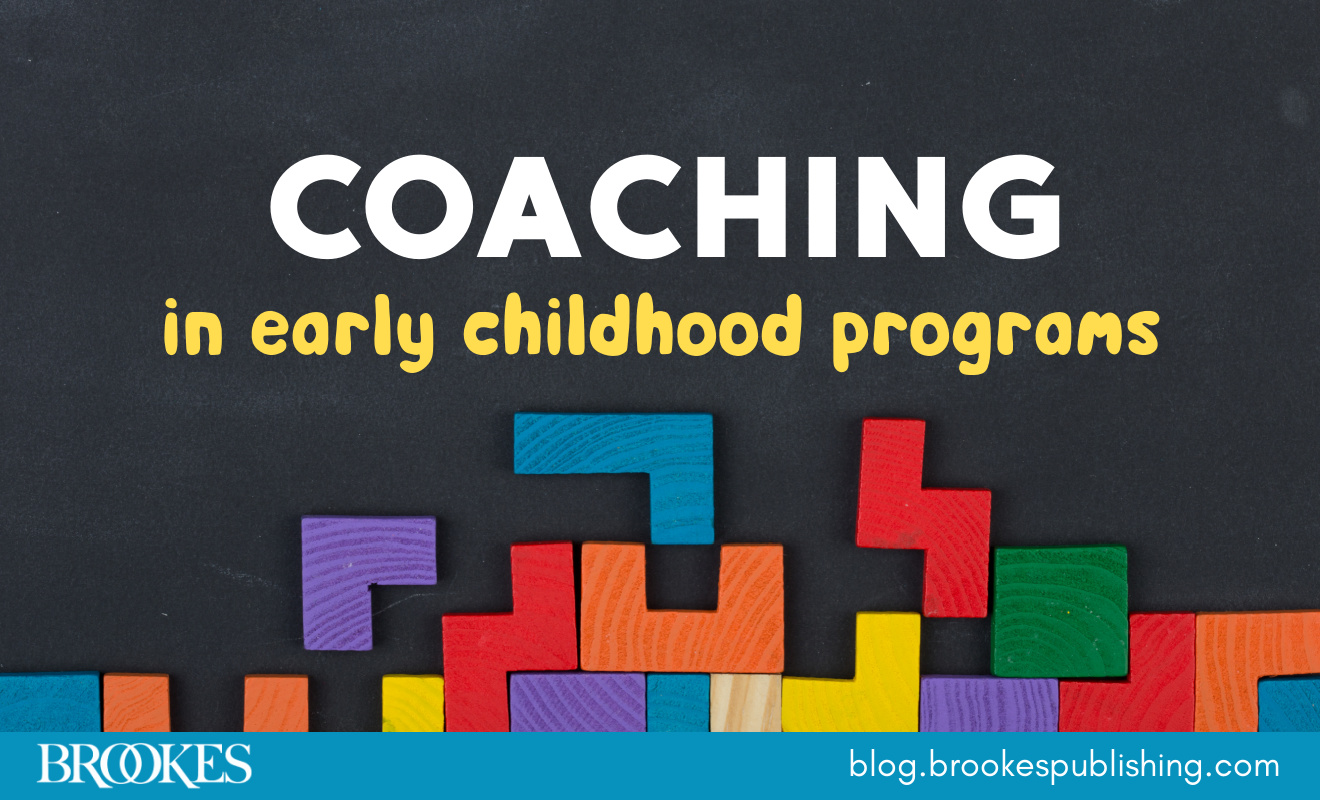10 Key Elements of Coaching in Early Childhood
May 23, 2024
In early childhood programs, coaching can be a highly effective strategy for supporting both colleagues and families as they enhance their knowledge, develop new skills, and promote healthy development of young children. The most effective coaching practices have a few elements in common, and today’s post introduces you to 10 of them.
Adapted from The Early Childhood Coaching Handbook, Second Edition by Dathan D. Rush & M’Lisa L. Shelden, this list provides a quick overview of the key components of coaching best practices.
Consistent with the principles of adult learning
The National Research Council published a research synthesis on human learning and its implications for teaching. The research in the report indicated that if a learner aims to gain deep knowledge of a particular content area, then they must develop an understanding of how to use the knowledge in a specific context and how to generalize it to other situations.*
Capacity building
Coaching builds the knowledge, skills, and abilities (i.e., capacity) of the coachee to be able to function without the coach’s ongoing support. Rather than creating dependency, the coach helps the coachee discover what they already know and can do, shares new information and ideas, assists the coachee with developing the tools they need to achieve the desired outcomes, and helps the coachee generalize the reflections and resulting actions to new and different situations.
Nondirective
Effective coaching consists of asking questions to promote reflection so that the coachee will become aware of and analyze what they want to have happen, what they are currently doing that is supporting or inhibiting that goal, and what possible alternatives will result in achieving the goal. “Nondirective” doesn’t mean that the coach can never share information with the coachee and must wait for the coachee’s self-discovery. Rather, the key to effective coaching is knowing when, how, and why questions are asked, information or feedback is shared, and a form of more directive instruction is used.
Goal-oriented
Although goals may change over time, their achievement by the coachee is the purpose of the coaching relationship. The relationship between the coach and coachee is defined by the coachee’s goals, which may be the factor that determines who serves as the coach.
Solution focused
If coaching is related to a specific problem or problem area, the purpose of using a coaching approach is to identify possible solutions that can be implemented immediately, instead of concentrating on the problem itself (as in traditional counseling or psychotherapy).
Performance base
Performance is measured in terms of growth, development, and learning over time, relative to the coachee’s desired outcomes. Coaching that focuses on performance is action oriented rather than driven by emotions or feelings. Coaching requires the coachee to actively participate and be engaged in order for learning and behavioral change to occur.
Reflective
Reflection can help the coachee discover what modifications or new knowledge and skills they might need in current and future situations to obtain a desired outcome. Reflection, active participation, and engagement on the part of the coachee are used both to strengthen that person’s competence with regard to what they can do and to build on current knowledge or skills to acquire new ideas and actions.
Collaborative
Coaching is a partnership. It cannot be based on the coach’s power over the coachee; in other words, it cannot be a hierarchical relationship in which the coachee implements actions due to directives, intimidation, or a need to satisfy or please the coach. The coach must learn what the coachee knows, understands, and is doing, including any preconceived knowledge about coaching and ideas for change, and how potential changes might be applied. The coachee may learn the coach’s processes for reflecting on and generating ideas, developing resources, solving problems, and planning actions, in addition to gaining any specialized knowledge that the coach provides.
Context driven
Coaching is a relationship built on the achievement of goals related to functional activities, beginning with the coachee’s current situation. The content of coaching is never separated from the context in which the coach and coachee use targeted performance and/or jointly identified solutions. The act of coaching includes observations and actions by the coach and the coachee in current situations related to the coaching goals, where the identified solutions may be tried and joint plans carried out.
As hands-on as it needs to be
The coach may assist the coachee in identifying possible options or external resources, share information to build deep factual knowledge on the topic, model an action for the coachee, and provide feedback on the coachee’s actions following the coachee’s self-reflections. As the coachee becomes more confident and competent in their performance, the coach’s role becomes more focused on process than on content—that is, the coach continues to prompt the coachee to reflect on and analyze ideas, consider alternatives, and plan actions. Over time, feedback by the coach becomes more affirmative and less informational.
When it’s done skillfully, with attention to these 10 key elements, coaching can enhance developmental outcomes for young children and help whole families, too. For a complete guide to conducting early childhood coaching that makes a difference in homes, schools, and communities, get the book behind today’s post!






Write a Comment
Your email address will not be published. Required fields are marked *
Post a Comment